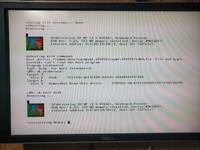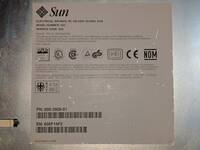hyperion (Sparcstation 20)
Summary
TODO
Notes
- I have two sets of CPUs for this machine, but only one pair can be installed at once.
Hardware
| Make | Sun |
| Year | 1995 |
| Model | SPARCstation 20 |
| Chassis | Pizza Box |
| Processor | 2x SuperSPARC II - 60 MHz |
| 2x Ross HyperSPARC - 150 MHz | |
| Memory | 512 MB |
| Ports | 13W3 (inactive) |
| DB-25 A/B Serial | |
| Sun I/O Mini-DIN 8 | |
| 2x MII | |
| RJ-45 LAN | |
| HD-50 SCSI | |
| 4x 3.5mm jack (headphone, mic, line in, line out) | |
| Graphics | |
| Storage | |
| Int. Peripherals | |
| Ext. Peripherals | |
| Dimensions | |
| Length/Depth | |
| Width | |
| Height/Thickness | |
| Weight | 12.0 kg (26 lbs 7 oz) |
Software
| Operating System | Solaris 8 |
| Solaris 9 | |
| NeXTSTEP 3.3 | |
| Unique applications |
Links
Log
My first SPARCstation 20
I first got a SS20 when I was 17 or so, around 2004. There was a used computer store called Software, Etc. in Allen, TX. I think we gave $160 for the whole machine, which included the Sun CRT, keyboard, mouse, and metal mousepad.
It had two of the higher end 85MHz SuperSPARC II CPU modules. I remember running Gentoo on it, and how it took forever to compile anything.
My second SPARCstation 20
Bought with 2x Ross HyperSPARC CPUs and a Vigra framebuffer (VGA output).
Here's some boot screens around 2016. I think I was testing the Vigra framebuffer with different Solaris versions. I also took a photo of the bottom label for some reason
Running NeXTSTEP, and the inevitable NVRAM fix
Found out the SS20 could run NeXTSTEP's SPARC port, but it was incompatible with the HyperSPARCs. So I bought a pair of 60 MHz SuperSPARC II to run it on. The faster SuperSPARCs (70-85 MHz)were much more expensive, and my previous experience where I had a faster pair I knew they ran quite hot. Besides, I will still have the HyperSPARCs for everything else.
I'm writing this a couple years later so I don't remember much about running NeXTSTEP. I put it on a separate disk for easily swapping out. The installer was quite slow and boring. The resulting Unix system felt very sparse. The UI was interesting to play with, and much more polished than the underlying system.
I streamed some video of it. Here's a few screenshots.
I also needed to replace the NVRAM battery at this time. I opted to cut the old battery off (leaving the crystal half of the clock module in place). Then I soldered a coin cell on and attached it with double stick tape.














